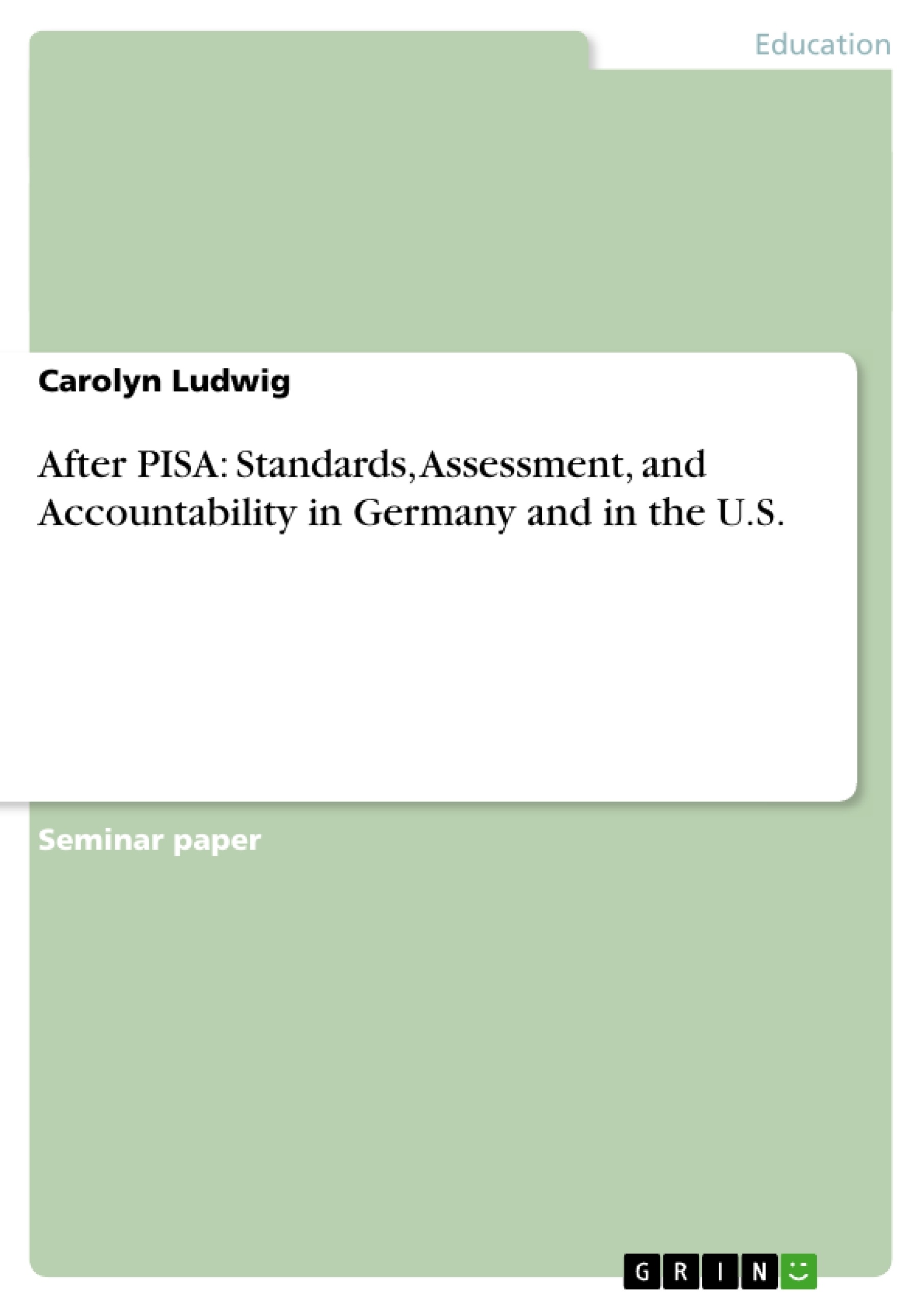In 2000, the OECD conducted the first PISA study. Students from 28 OECD-member and four OECD-nonmember states took part, among them Germany and the U.S.
Germany was ranked 21st both in mathematics and science, and the 22nd in reading. It thus got an overall 21st ranking. The U.S. were ranked 20th in mathematics, 15th in science, and 16th in reading, thus ranked 17th overall. This meant an overall below score average for both countries. Besides ranking the performance of the students, the results also shed light on the correlation between socioeconomic status and academic achievement. Germany displayed the highest correlation between student performance and social background of all countries tested. In addition, student performance strongly varied between the school forms Gymnasium, Hauptschule and Realschule. Regarding educational equality, this finding challenged Germany’s tripartite school system. “Socio-economic disad-vantage has a notable impact on student performance in the United States”, too (cf. OECD 2011), albeit by far not as strong as in Germany. In light of the high child poverty rate in the U.S. , this finding could have been anticipated. Nevertheless, it was alarming.
PISA has been criticized for its objective, methodology, and the interpretation of its results. It is, for example, problematic to test and compare the achievement of students, disregarding the school form they visit at the time of the assessment. Moreover, the fact that the students tested by PISA were schooled in completely different school systems challenges the comparability of the results. Nonetheless, PISA has a great social impact. When the results of the first PISA study were published in 2001, Germany and the U.S. conceived of them as a “shock” and reacted similarly: with major reforms of their education systems that would not have been otherwise possible. The changes were immense, particularly with regard to educational progress assessment, teacher accountability, and trans-regional comparability of educational standards. How did this affect the results of the second PISA study, which was conducted in 2003? While the nature and the purpose of both countries' reform agendas were questionable, the U.S. reforms in particular were condemned to failure. They were inadequate for improving the education system and thus the PISA results. Based on a comparison of the two reform agendas, ideas on how to adequately improve education will be presented in the conclusion.
Inhaltsverzeichnis
- Introduction
- 2001: The "PISA shock” hits Germany and the U.S.
- After PISA: Reforms in Germany
- After PISA: Reforms in the U.S.
- The development of the results in the following PISA studies
- Conclusion and future outlook
- References
Zielsetzung und Themenschwerpunkte
This text analyzes the impact of the first PISA study on the education systems of Germany and the United States. It examines the reforms implemented in both countries in response to the "PISA shock" and evaluates their effectiveness. The text also explores the broader implications of high-stakes testing on education and the challenges of achieving educational equity.
- The impact of the PISA study on education policy in Germany and the U.S.
- The nature and effectiveness of educational reforms implemented in response to PISA.
- The role of high-stakes testing in shaping education systems.
- The challenges of achieving educational equity and addressing socioeconomic disparities.
- The long-term consequences of PISA on education and society.
Zusammenfassung der Kapitel
The introduction sets the stage by outlining the context of the first PISA study, highlighting the performance of Germany and the U.S. in comparison to other OECD countries. It emphasizes the correlation between socioeconomic status and academic achievement, particularly in Germany, and the implications for educational equality.
Chapter 2 delves into the "PISA shock" that hit both Germany and the U.S. in 2001. It examines the media response and public reaction to the poor results, highlighting the historical context of school assessment in both countries. The chapter also introduces the concept of "washback" and its impact on education, particularly in relation to high-stakes testing.
Chapter 2.1 focuses on the reforms implemented in Germany after the PISA study. It discusses the role of the Standing Conference of the ministers of Education and Cultural Affairs of the Länder in the Federal Republic of Germany (KMK) in shaping the reform agenda. The chapter analyzes the political dynamics that led to the adoption of the reform program, including the influence of the Social Democratic Party (SPD) and the Christian Democratic Union (CDU).
Chapter 2.2 examines the reforms implemented in the U.S. after the PISA study. It explores the rationale behind the reforms and their effectiveness in improving the education system. The chapter also discusses the limitations of the reforms and their potential for failure.
Chapter 3 analyzes the development of the results in subsequent PISA studies, providing insights into the long-term impact of the initial "PISA shock" on education in Germany and the U.S.
Schlüsselwörter
The keywords and focus themes of the text include PISA, educational reform, high-stakes testing, washback, educational equity, socioeconomic disparities, Germany, the United States, OECD, TIMSS, school systems, accountability, and educational standards.
- Citar trabajo
- Carolyn Ludwig (Autor), 2014, After PISA: Standards, Assessment, and Accountability in Germany and in the U.S., Múnich, GRIN Verlag, https://www.grin.com/document/277494
-

-

-

-
¡Carge sus propios textos! Gane dinero y un iPhone X. -

-
¡Carge sus propios textos! Gane dinero y un iPhone X. -

-
¡Carge sus propios textos! Gane dinero y un iPhone X. -

-
¡Carge sus propios textos! Gane dinero y un iPhone X. -

-
¡Carge sus propios textos! Gane dinero y un iPhone X. -

-
¡Carge sus propios textos! Gane dinero y un iPhone X.

